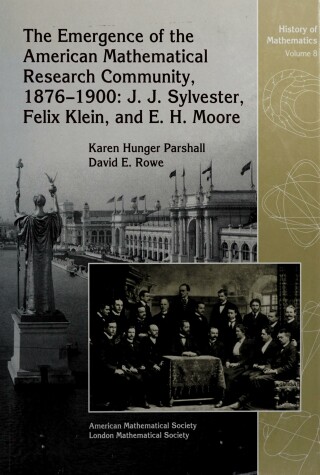History of Mathematics
1 primary work
Book 8
The Emergence of the American Mathematical Research Community, 1876-1900
by Karen Hunger Parshall and David E. Rowe
Published 30 August 1994
This volume traces the transformation of the United States from a mathematical backwater to a major presence during the quarter-century from 1876 to 1900. Presenting a detailed study of the major figures involved in this transformation, it focuses on the three most influential individuals---the British algebraist James Joseph Sylvester, the German standard-bearer Felix Klein, and the American mathematician Eliakim Hastings Moore---and on the principal institutions with which they were associated---the Johns Hopkins University, G @o ttingen University, and the University of Chicago. This book further analyses the research traditions these men and institutions represented, the impact these had on the second generation of American mathematical researchers, and the role of the American Mathematical Society in these developments. This is the first work ever written on the history of American mathematics during this period and one of the few books that examines the historical development of American mathematics from a wide perspective. This book is intended for general mathematical audience particularly those interested in the history of American mathematics and science.
